Welcome back, class! What has the Gentleman been up to, you ask? Well, I want a way to do reviews, but faster, and easy to comprehend at a glance. Plus I end up repeating myself a lot when describing marijuana flower characteristics. So, I've come up with a Flower Grading System to streamline the process so I can identify the hottest flowers around while they're still available for you to grab. Nice!
Ok, a caveat. The Gentleman is a perfectionist and thus, views the system as a work in progress. But we shall not let Perfect be the enemy of Good! Nayeth, sir, nayeth. Below, I'll outline the system I've created and explain why I've scored things the way I have. I'm absolutely open to your thoughts on it- have I left anything out? Disagree with my scores? Let me know!
Essential Characteristics
Here we consider the three most important criteria of cannabis- its Aroma, its Flavor, and how it Smokes. This is the Make or Break round. In the Gentleman's opinion, flowers that fail to achieve at least a 2 in AROMA and FLAVOR are not worth smoking, regardless of how many points they score in other areas, as significant, possibly dangerous, defects have been detected.
AROMA
0- Intense Major Defect
1- Major Defect
2- Minor Defect
3- Good Smell
4- Intensely Good Smell (Loud)
FLAVOR
0- Foul or Major Defect
1- Minor Defect
2- Neutral, No Defect detected
3- Minor Good Taste
4- Intensely Good Taste
SMOKE
0- Acrid
1- Heavy Cough
2- Moderate Cough
3- Voluntary Cough
4- Smooth
I went over my list of known defects in my Bad Marijuana Guide. Here's how I've classified them along this scale:
MAJOR DEFECT- Any Mildew, Sweat, Rotting, & Chemical scent or flavor OR an instantly identifiable Ammonia scent. The presence of these odors indicate the possibility of bacteria, pesticides, and unflushed nutrients in your flower. Do not smoke! Throw away.
NO SMELL- Have you noticed there is no Neutral on the AROMA scale? That's because lack of smell typically indicates old flower. It might have smelled awesome at one point, or it may have been the worst offender of all time. There's simply no way to tell anymore. And since we don't want to encourage folks to pump old weed for a passing (2) score, we're scoring it at 1. We want our weed fresh, dammit!
MINOR DEFECT- Light Ammonia smell or identifiable Hay or Grass scents. This feels like grading on a curve to me, but I guess if the average weed across the country is sporting at least a minor defect (and it most certainly is), then scoring it as average is correct. FYI ammonia is easily the most common defect I've found in recent years (though Mildew is gaining steam recently), so breaking it up across Major & Minor depending on the intensity makes a lot of sense to me. Flush your MF Plants, People!
FLAVOR DEFECTS may be harder to identify, so we'll use the overall descriptor of FOUL as a catch-all for weed that tastes like burnt asshair. Don't ask how I know that. I do find Sweat and Mildew easy to identify in flavor, while Chemical will taste metallic.
NEUTRAL FLAVOR will describe most weed, though. It just tastes like combustible plant matter. Perhaps a vaporizer will prove a useful tool for sussing out true flavor? I'll let you know if that pans out!
ACRID is a burning or unpleasant tingling sensation on your palette, the roof of your mouth, or in your throat. Most often accompanied by Major Defects.
GOOD AROMAS & FLAVORS include, but are not limited to: Sour (skunky), Floral (like Lavender or Eucalyptus), Fruit (Citrus), Woodsy (like Pine or Sandalwood), Spices (think Mint or Cloves), Earthy (most often the soil it was grown in; I've found Tea on several occasions), and mother-humping high-test Diesel Gasoline. I also want to add a category for 'that classic Purps smell' that I don't know how to classify otherwise.
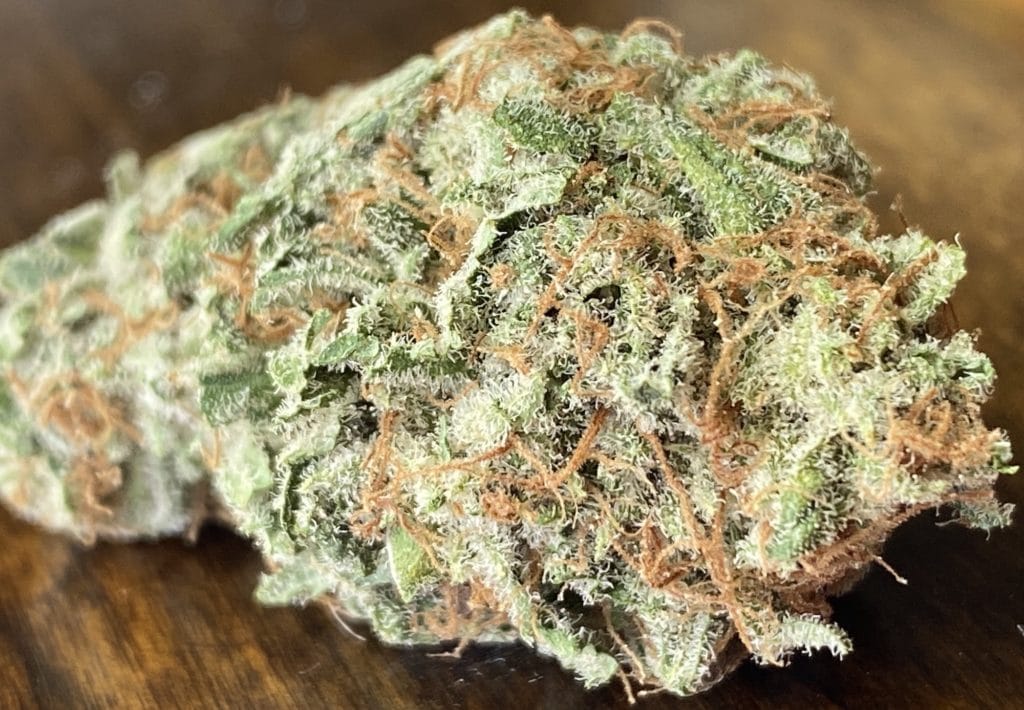
I have some concern about the inclusion of the SMOKE category. It is possibly too subjective to measure the intensity and frequency of coughs. Heavier trichome production also lends itself to a heavier smoke and thus, more coughing, and we don't want to penalize for trichomes.
I'm leaving it in for now and there are several reasons why. Looking back on my adventures, I feel like the worst flowers I've tried all made me choke or cough heavily, like every time I took a drag. Heavy trichomes, on the other hand, make you cough but with less frequency, and can be mitigated by taking smaller hits. It also seems like a more proper category for the ACRID defect than combining it with TASTE.
Further, if we expect cannabis to be medicine- then the smoother it goes down, the better. And then personally, I have a preference towards a smoother smoke that doesn't cause a hacking fit and watery eyes.
How about we compromise? If a flower gets at least a 2 on both AROMA and FLAVOR- no discernible defects- and it also gets a trichome grade of 3 or 4, we'll boost the SMOKE rating up 1 point to the maximum of 4. And we'll keep track of any samples that score a perfect 4 in both TRICHOME and SMOKE for future consideration. I like zis, you like zis? Sweet duster, by the vay.
One last major major point here. There are visible defects you can see with a magnifying scope! Like the presence of dead spider mites, for one, or identifying mold without having to smoke it. I don't have a category for that currently! This scale is intended to be used by you, too, and I'm guessing you don't have one. If you or the person under your care are immunocompromised, you should absolutely get one. And if you are in the industry, you should have one and be acquainted with what to look out for, so you can protect your patients- and your good reputation.
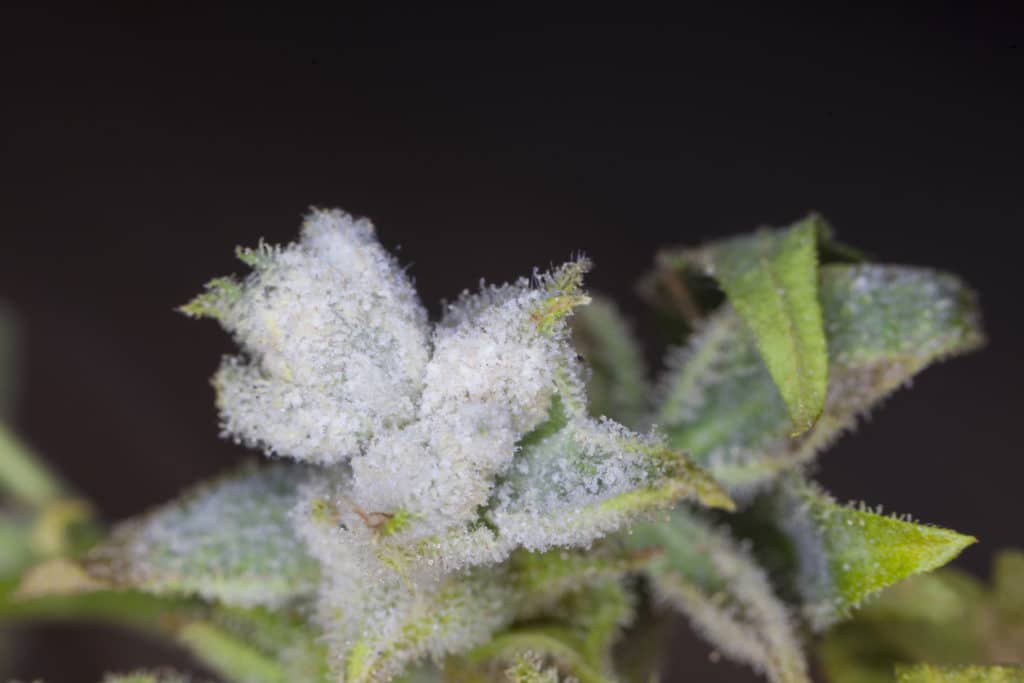
Potency Characteristics
TRICHOMES
0- No/Few Visible Trichomes (up to 25% coverage)
1- Sparse (up to 50% coverage)
2- Most (up to 75% coverage)
3- Full (up to 100% coverage) - looks sparkly
4- Large, Visible Trichomes- looks shaggy or woolly with trichomes
RESIN
0- Not Sticky
1- Tape (can feel it when pulling bud apart)
2- Paste (can feel it with your fingers)
3- Glue (trichomes stick to your fingers when handled)
4- Sticky Icky! You can't even touch the bud without getting trichomes on your fingers!
SEEDS
0- Brick weed
1- 6+ seeds/eighth of flower
2- 4-5 seeds/eighth of flower
3- 1 or 2 seeds/eighth of flower
4- no seeds
TRICHOMES have long been associated with potency, which is why the classic grades for commercial weed are associated with the growing method- indoor is known for producing the most trichomes, then greenhouse, then outdoor. This matches my experience so I have adopted it.
Note that I'm not braking out a loupe to enhance the trichomes for study. This is based on what's visible to the naked eye. Trichomes aren't so rare that we gotta go hunting for them, everybody's got trichomes. MY GRANDMAMA WANTS TO FLY TRICHOMES! Ahem.
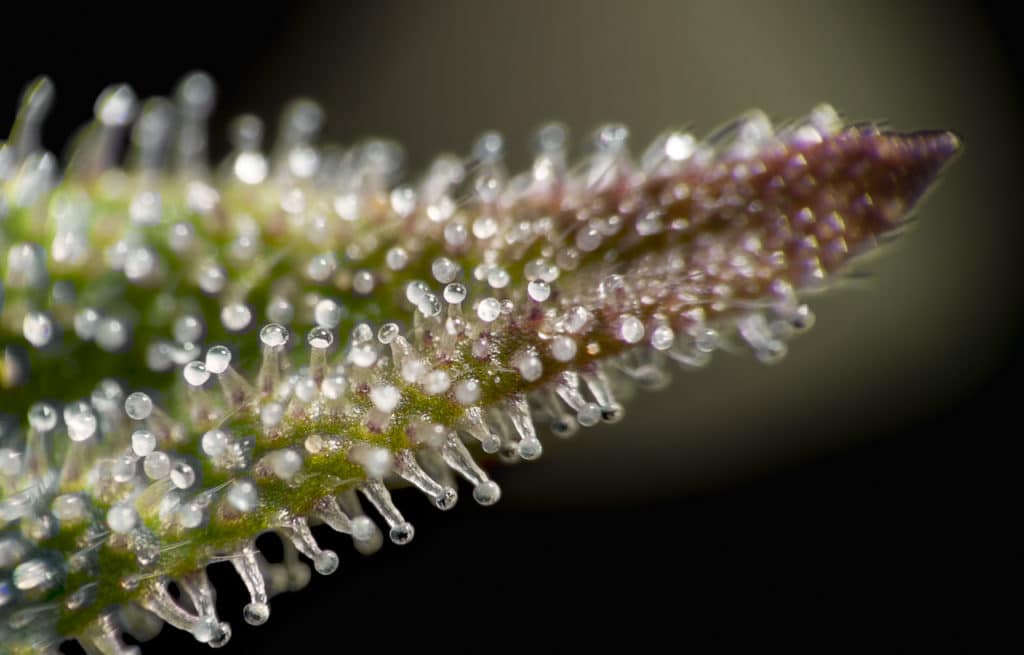
Plenty of people out there tout Potency as the ultimate test for cannabis, the Gentleman cares more about whether it's safe to smoke than if it hits like a heavyweight. I agree that more trichomes= more potency AND that potency is important, cuz you don't want to smoke and not feel anything. However, plenty of consumers aren't looking for the most potency they can find. For all of these reasons, TRICHOMES are part of the non-essential grades.
RESIN is rare in commercial cannabis, but I do encounter this welcome characteristic on occasion. Even though many strains on the market are not known for resin production, it should be included in our flower grades to determine the very best possible cannabis flower. DO NOT CONFUSE "WET" WEED FOR RESIN! Wet buds can be difficult to pull apart, but are not sticky.
It's weird to include SEEDS here since you don't see the old brick weed like the old days, but it does happen, especially in states where they can grow outdoors. Including it improves this scale that by setting another data point for improperly grown cannabis. It will also balance out the RESIN category due to the rarity of each. It's appropriately placed here in POTENCY since allowing your flowers to be pollinated will inhibit THC production. Most important, seeds won't get you high, so they're dead weight in your bag. Admittedly, I just worked backward from perfect, seedless sinsemilla in terms of where I'd grade my own disappointment upon finding that number of seeds in my bag, so I'm open to feedback here.
Aesthetic Characteristics
While it'd be easy to dismiss this section as mere bag appeal, it speaks to how well your flower was grown, cured, manicured, and how fresh it was upon delivery. The zero scores in particular represent a real problem with one or more of these process and for Density & Moisture, could indicate a safety issue. That being said, I'd much rather have a loose flower with a good smell than a bad smell with a perfect density score, so this part of the scale is non-essential.
MANICURE
0- Choppy (Machine Trimmed)
1- Extraneous Exterior Stems
2- Extraneous Sugar Leaf
3- Small Stems/Leaf Remain
4- No Stems/Leaf Remain
STRUCTURE
0- Popcorn Nugs
1- Extraneous Interior Stems
2- Compressed Buds
3- Mid/Large Nugs
4- Full-Bodied, Curvy Buds
MOISTURE
0- Wet
1- Brittle
2- Moist
3- Dry
4- Perfect
DENSITY
0- Brick
1- Larfy
2- Loose
3- Tight
4- Perfect
MANICURE is the industry term for trimming the undesirable sugar leaf and stems from the flowers. The more you leave on, the lower you score, since cannabis is purchased by weight, and stems and leaves are lower potency than flower. You can usually tell a poor machine-chop easily cuz it looks like it's been through a lawnmower. Trichomes can be lost with this rough approach, so it makes sense you'd only do it to flowers lacking such. The perfect manicure leaves no extraneous stems or sugar leaf.
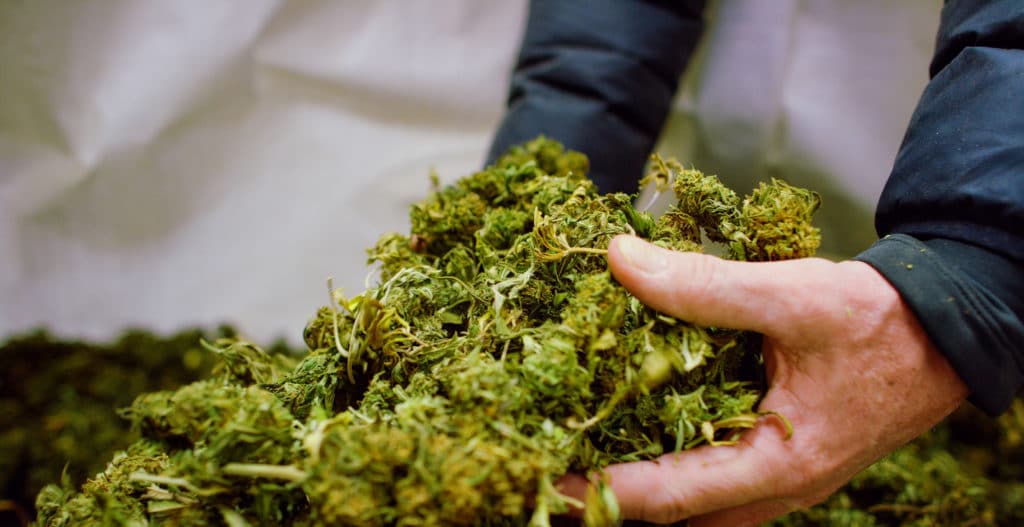
STRUCTURE refers to the size and shape of the buds in your bag. I'd say you need at least an eighth to determine its structure rating- gram sales can often be leftover popcorns. If I get an eighth of popcorn, I'm unhappy. More than that, though, the buds will be too small to get a proper read on the Moisture and Density scores. I suppose we can throw shake in with popcorn, but you usually know up front if you're buying shake.
Moving on from the barrel's bottom is a higher than expected interior stem-to-flower ratio, then buds that have clearly suffered compression during packaging/transport. Medium to large size nugs is somewhat subjective, but large doesn't necessarily equate to mass. We'll try to refine with some actual weights in the future.
A perfect score will be granted to buds at this size that have the flowing curves of Shakira with the odd juttings of Madonna's cone-titties. You can tell this flower has had the chance to grow to its fullest potential and is now a fierce, independent woman that makes men drool and takes no shit. Or makes men shit and takes no drool. Whatever! No, I'm not sexually attracted to marijuana. I've explained this many, many times!
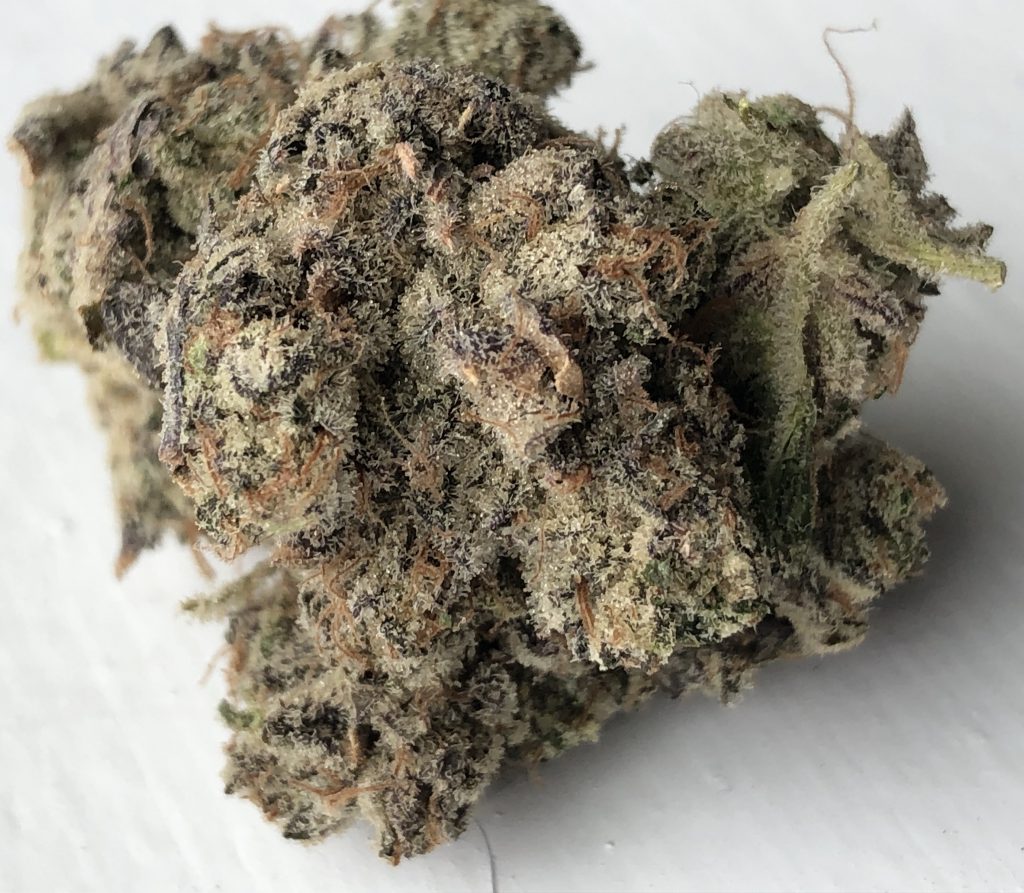
MOISTURE is where we bring out the finger test, baby! It's not as dirty as you think. What you need to do is find a medium-large sized nug to test on. Press on the bud harder with one finger. Now observe- did the stem snap? Did the flower create a tiny crater where you pressed it? And did it spring back into shape? A flower with ideal moisture should do all three. on the lower end of the scale, between WET and BRITTLE weed, make mine dry all day. Less concern about microbes, less pain to break apart and burn.
DENSITY is judged by pulling the buds apart by hand. Brick density will be very difficult to pull apart in this fashion and might even break the tooth of a cheap grinder. Larfy is the industry term for bud that's very loose, possibly harvested immaturely, and is often accompanied by large stems to keep it together.
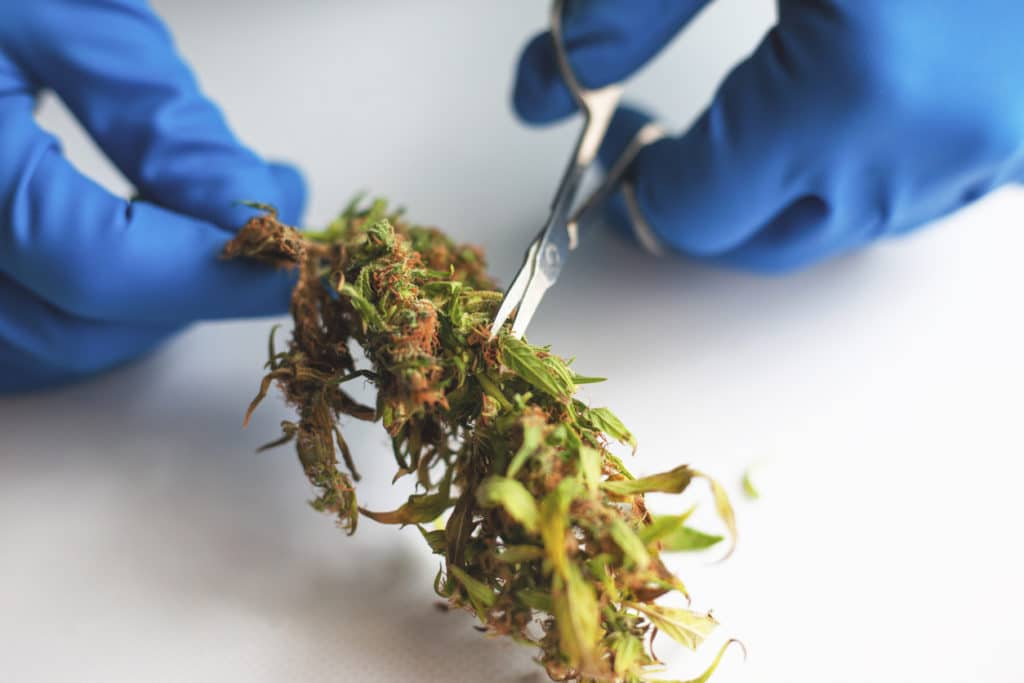
You'll notice that DENSITY doesn't proceed in order from hard, soft, hard, soft. The final two are transposed. While there's functionally no difference between LOOSE and TIGHT for the consumer, the latter represents cannabis that was the more properly grown between these two poles. The ideal density lies between the two- provides some resistance to being pulled apart, but not enough that it becomes a chore.
Average the Scores like a GPA
Assuming your sample has passed the essential characteristics section, scoring at least a 2 for AROMA, FLAVOR, and SMOKE, you can proceed with the rest of the test. Once you have all the scores, simply average them like you did your GPA in school. Add 'em up, divide by ten. That's right, we got a decimal system up in this bitch! Who doesn't like the number 10? Show me one person that doesn't like the number 10! You can't, can you?
So in the end, your weed gets a report card like this:
AROMA: 3 (CITRUS)
FLAVOR: 2
SMOKE: 3
RESULT: PASS!
TRICHOMES: 3
RESIN: 0
SEEDS: 4
MANICURE: 4
STRUCTURE: 3
MOISTURE: 3
DENSITY: 2
SAMPLE WEED GPA: 2.7 (C+)
And then I get more time to write about slime monsters! It's a win for everybody, baby!